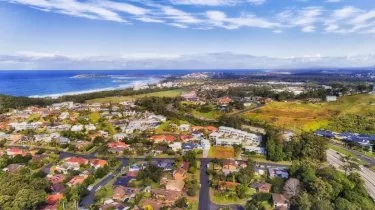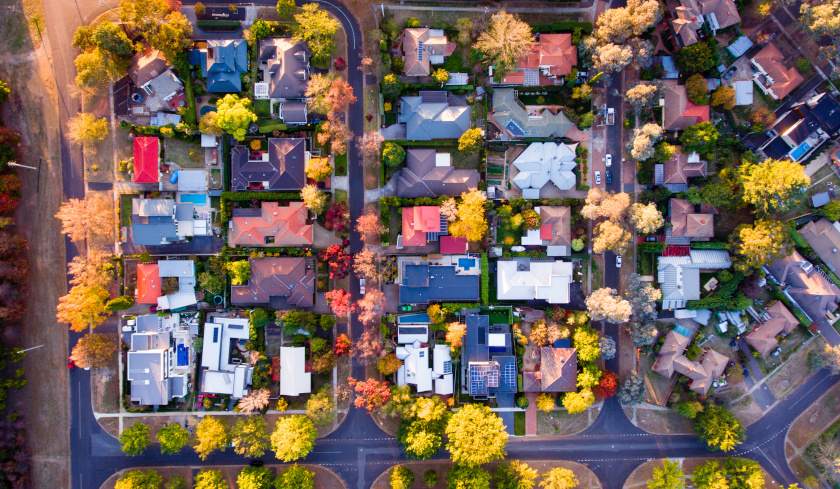Invest
Will regional property markets continue to outperform the capital cities?
Invest
Will regional property markets continue to outperform the capital cities?
Price growth in regional areas has outpaced Australia’s capitals for nearly two years.
Will regional property markets continue to outperform the capital cities?
Price growth in regional areas has outpaced Australia’s capitals for nearly two years.

A new report from CoreLogic has found that the median property price in regional Australia surged 26.1 per cent in the year to January 2022, compared to 21.3 per cent growth in the combined capital cities.
While the trend of regional areas outperforming the capitals has lasted for nearly two years, CoreLogic head of research Eliza Owen said that questions were now being raised about whether this could continue in the future.
“Timing any shift in the housing market can be very difficult. Generally, a downswing in property values is fairly broad based across both capital cities and regions and it’s common for the two markets to roughly perform in line with each other,” she said.
“Through the 2010s for example, there appeared to be a lead-lag relationship between capital city and regional housing market performance by three to six months.”

Based on this relationship, growth in regional areas would have been expected to slow in late 2021, after capital city markets reached their peak growth in April last year.
Instead, regional price growth accelerated towards the end of 2021 while growth in the capital cities continued to slow.
“This created an unusual divergence between the two markets, where price growth accelerated to 6.3 per cent in regional Australia over the three months to January,” Ms Owen said.
“Despite the recent exuberance, I would expect growth rates in regional Australia to start slowing early this year.”
CoreLogic’s regional market update found that 24 of Australia’s 25 largest non-capital city regions had recorded double-digit property price growth over the year to January 2022 and 18 regions had seen rises above 20 per cent.
The Southern Highlands and Shoalhaven in NSW lead the regions in house price growth with a jump of 38.2 per cent, followed by gains of 36.3 per cent for the Gold Coast and 35.4 per cent for the Sunshine Coast.
Median property values were also found to have increased in all but two of the 319 regional local government areas analysed by CoreLogic.
The largest increase in median house value was seen in the Kiama LGA of NSW with a rise of 43.9 per cent to $1.63 million, while Byron Shire recorded the highest overall median regional house value of $1.84 million.
Ms Owen warned that while some areas may continue to record growth moving forward, few regions would be able to avoid the downswing in the property market.
“Key drivers for performance in the regions will come down to higher interest rates and affordability constraints, the same headwinds capital city markets are facing,” she said.
“Regions have an additional factor to contend with and that is the possibility of a return to ‘normality’ and what that means for a potential refocus on cities.”
After a shift towards property in regional areas driven by greater work flexibility during 2021, NAB found that 26 per cent of property professionals now see buying in a metropolitan area as an important factor for home buyers compared to 21 per cent for buying in a regional area.
“Employers may make a return to physical office space a priority in the years ahead, which would necessitate buyers to reconsider housing options closer to a capital city,” noted Ms Owen.
“However, this scenario seems less likely and more long-term than the arrival of the Omicron variant, which in many ways reinforced that this an ongoing health crisis and Australians prioritised their current housing needs to align with their desired lifestyle.”

Property
North platform adds household reporting feature to boost adviser efficiency
AMP's North platform has launched consolidated household reporting across multiple client accounts, helping financial advisers streamline their client review processes. Read more

Property
What Adds The Most Value To Properties?
Wondering how to up the value of your property? Properties are worth a lot of money in general, but there’s always a way to maximise value. The good news is that most of the things you can do to ...Read more

Property
Centuria reports strong growth in alternative real estate sectors for FY24
Centuria Capital Group has reported significant growth in alternative real estate sectors for the 2024 financial year, driving stable performance and increased guidance for FY25. Read more

Property
How to leverage equity in your home for investment or renovation
Home equity, the value of your property minus any debts owed, is a powerful financial resource many homeowners in Australia can utilize to further their financial goals. Whether you're looking to ...Read more

Property
Exploring REITs: Real estate investment without buying property
Real Estate Investment Trusts (REITs) offer a compelling investment alternative for those interested in the real estate market but may not want to endure the complexities and capital requirements of ...Read more

Property
Retirement communities: a pivotal element in meeting Australia's housing targets
The Retirement Living Council (RLC) has recommended that retirement communities should be considered a vital part in the Australian Government's initiative to fulfill the Housing Australia Future Fund ...Read more

Property
Australians adjust financial strategies amid changing property market dynamics
The 2023 calendar year saw Australian borrowers acquiring a total of $300.9 billion in new loans for property purchases, marking a 12.7% decrease from the previous year. Read more

Property
Split home loans unlocking doors for Aussie buyers
Australians are teaming up to dive into the real estate market and seize the advantages of home ownership, with the trend of split home loans surging as family and friends unite to buy properties ...Read more

Property
North platform adds household reporting feature to boost adviser efficiency
AMP's North platform has launched consolidated household reporting across multiple client accounts, helping financial advisers streamline their client review processes. Read more

Property
What Adds The Most Value To Properties?
Wondering how to up the value of your property? Properties are worth a lot of money in general, but there’s always a way to maximise value. The good news is that most of the things you can do to ...Read more

Property
Centuria reports strong growth in alternative real estate sectors for FY24
Centuria Capital Group has reported significant growth in alternative real estate sectors for the 2024 financial year, driving stable performance and increased guidance for FY25. Read more

Property
How to leverage equity in your home for investment or renovation
Home equity, the value of your property minus any debts owed, is a powerful financial resource many homeowners in Australia can utilize to further their financial goals. Whether you're looking to ...Read more

Property
Exploring REITs: Real estate investment without buying property
Real Estate Investment Trusts (REITs) offer a compelling investment alternative for those interested in the real estate market but may not want to endure the complexities and capital requirements of ...Read more

Property
Retirement communities: a pivotal element in meeting Australia's housing targets
The Retirement Living Council (RLC) has recommended that retirement communities should be considered a vital part in the Australian Government's initiative to fulfill the Housing Australia Future Fund ...Read more

Property
Australians adjust financial strategies amid changing property market dynamics
The 2023 calendar year saw Australian borrowers acquiring a total of $300.9 billion in new loans for property purchases, marking a 12.7% decrease from the previous year. Read more

Property
Split home loans unlocking doors for Aussie buyers
Australians are teaming up to dive into the real estate market and seize the advantages of home ownership, with the trend of split home loans surging as family and friends unite to buy properties ...Read more








